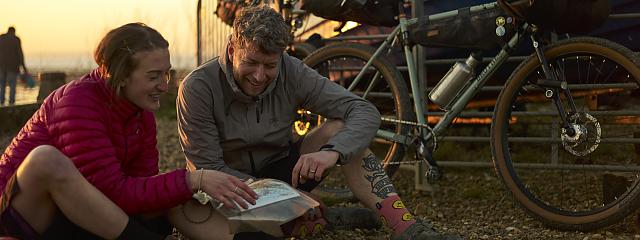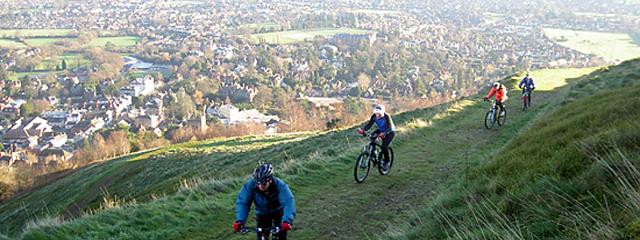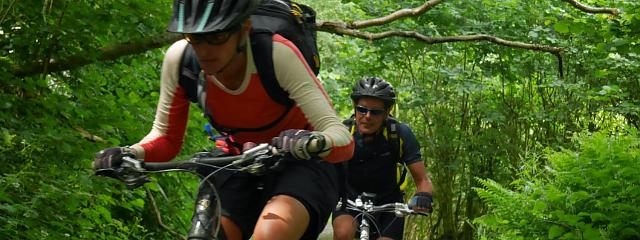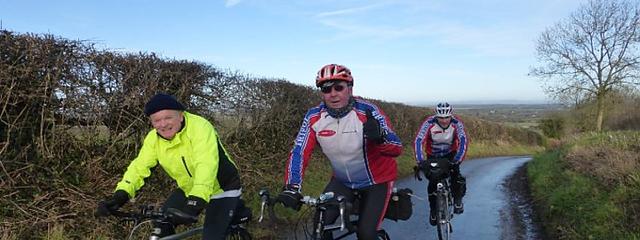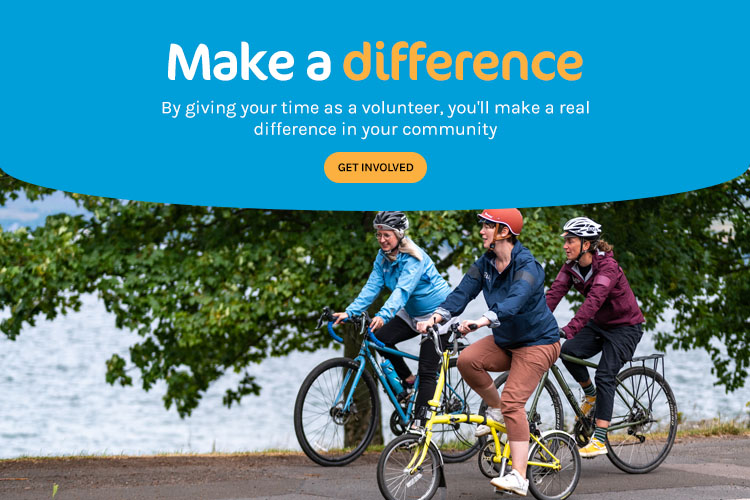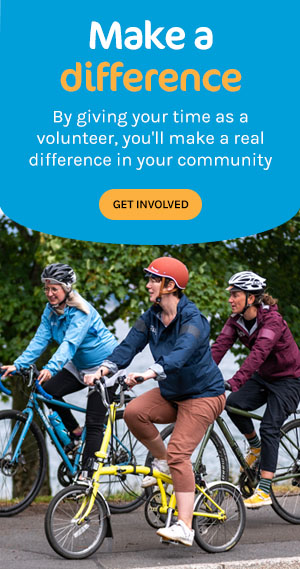
Cycling in Monmouthshire
Cycling in Monmouthshire
Monmouthshire has always had a border feel about it, as demonstrated by the Peregrine Path (part of NCN423), a great ride suitable for cycling families. It follows the River Wye – the traditional English/Welsh border – half-a-dozen miles from Monmouth to Goodrich (in Herefordshire). Most of it is car-free, with some minor roads, and mostly it’s tarmac. In beautiful Monmouth itself you can cycle car-free across Monmow bridge, Britain’s only remaining fortified river bridge, with its picturesque gate tower.
A longer bridge crossing is one of Britain’s great cycling experiences: the ‘old’ Severn Bridge. A spectacular cycle path runs alongside the motorway (M48) taking you from England into Wales and the fine town of Chepstow (the actual crossing point is the continuation bridge over the Wye).
More family-friendly cycling is along the scenic, winding Monmouth and Brecon canal towpath. The Monmouthshire section runs north west from the lovely market town of Abergavenny, and the first few miles to Llangattock are fine for children; south from Abergavenny (NCN49) it heads down towards Pontypool.
Tourers can enjoy exploring the quiet lanes between Chepstow, Usk, Abergavenny and Monmouth. The Four Castles Route is a 32-mile loop on quiet (but hilly) roads through the country west of Abergavenny, best for experienced cyclists.
Tintern, with its abbey, is a lovely area of Wye scenery and has several cycle-friendly cafes. The forested areas to its west and on the Welshside of the river to the north have plenty of tracks and quiet lanes to roam.
Road fans looking for a classic climb can tackle ‘The Tumble’, the B4246 rising 400m (1,300 feet) at 10% south from Govilon, outside Abergavenny.
Cycling groups and clubs in Monmouthshire
Pembroke Primary School Bike Club (Chepstow)
http://www.cyclinguk.org/local-groups/pembroke-primary-school-bike-club
Abergavenny Cycle Group (Abergavenny)
http://www.cyclinguk.org/local-groups/abergavenny-cycle-group-0
https://www.facebook.com/groups/abercycle/
Social rides, routes, and campaigning
Awfully Big Adventures (Monmouthshire)
http://www.cyclinguk.org/local-groups/awfully-big-adventures
Monmouth CC (Monmouth)
https://www.cyclinguk.org/local-groups/monmouth-cc
What to take with you on your ride
The only thing you really need for cycling is a bike. And maybe a phone, and credit card: in Britain you’re only a call away from any service you might need.
But unless money is no object, it’s wise to take a few things with you on a day ride. A saddlebag, panniers or bikepacking bags are best for carrying stuff. A front basket is second best. A rucksack is third best. Your sweaty back will soon tell you why.
Cycling short distances in jeans and t-shirt is fine, but on a long or strenuous ride – over ten miles say, or in hills – those jeans will rub and the t-shirt will get damp and clingy. Shorts or, yes, lycra leggings and padded shorts will be much comfier, and merino or polyester cycling tops wick away the sweat, keeping you dry and comfy. (They don’t have to be lurid colours.)
If rain’s in the air, pack a rainproof top. If it might turn chilly, take a fleece or warm top. But the thing you’re most likely to forget is the sunblock.
It’s remarkable how often you enjoy being out on the bike so much that you suddenly realise it’s getting dark. So take lights (which are legally required at night). They’re price of a sandwich, take no space, are easy to put on thanks to tool-free plastic clips, and the batteries last for ever.
Take a puncture repair kit (with tyre levers) and pump. Make sure it fits your valves, which will be either ‘Presta’ or ‘Schraeder’ – realising they don’t match is a very common roadside discovery! Carrying a spare inner tube (make sure it matches your tyre size) makes puncture repair much easier: mend the old one back at home. If you do get in trouble, some kindly passing cyclist will probably stop to help.
Using a helmet is a personal choice – they’re not legally required.
Cycling makes you thirsty, so take lots of water. Long-distance riders talk about ‘the bonk’ – a sudden loss of energy rendering you almost stationary. It’s miraculously and instantly cured by eating something sweet. On short rides you’re unlikely to run out of energy, but just in case, take a snack like flapjack, banana, chocolate or jelly babies.
Taking a packed lunch or picnic will save you money, though that hot drink and cake in a cosy cafe could yet prove very tempting!
Your phone GPS could be invaluable for showing where you are when lost; you can download free detailed UK maps and GPS software before your trip.
Paper maps are still useful, though, so take one: no power source or wifi signal required, and they’re great for suggesting possibilities or changes of plan.
What have we missed? Recommend your favourite routes using the comments box below.
Cycling routes in Monmouthshire
Abergavenny, and the Four Castles Route
Cycle A-way’s list of routes, maps and resource in Monmouthshire






